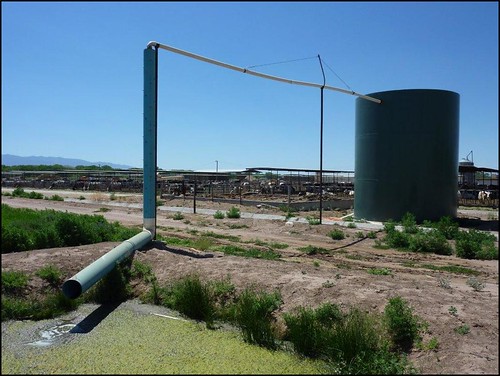New Mexico is one of several states to participate in building anaerobic digesters, which use manure as fuel to create energy. The goal is to construct them over a four-year period, through USDA’s Rural Development, Natural Resources Conservation Service (NRCS) and Farm Service Agency (FSA).
On October 26, Agriculture Secretary Tom Vilsack announced funding for 19 biodigester projects in 8 states, funded through USDA Rural Development’s Rural Energy for America Program. In Fiscal Year 2011, USDA, through the REAP program, provided nearly $21 million in assistance for biodigesters, and leveraged over $110 million in project development. Through its Value-Added Producer Grant program, USDA provides planning grants of up to $100,000 and working capital grants of up to $300,000 to be used for establishment of a biodigester. Additionally, NRCS offers financial and technical assistance through the Environmental Quality Incentives (EQIP) program.Anyone who has ever been around dairy or hog farms knows strong smells can permeate the air around them. There are other issues associated with high-volume animal production, too, including air and water quality concerns, and storage of waste water and solids.
Controlled anaerobic, or oxygen-free, digestion of animal manure is a way to treat manure to prevent foul odors while generating a usable energy product. Anaerobic digesters break down liquid manure into biogas and a low-odor anaerobically digested manure, or effluent. The biogas can be burned to produce heat, electricity or both, while the effluent can be stored and applied to fields with significantly less odor than stored, untreated liquid manure—but with the same amount of nutrients.
New Mexico does not have large poultry or swine producers, but is one of the country’s largest dairy producers. USDA will focus mostly in the south and eastern portions of the state, where about 70 dairies are located. All together, there are roughly 225,000 dairy cows in New Mexico on any given day.
The manure of one cow can power a 100-watt light bulb continuously, according to Chuck Braden, agricultural engineer for NRCS New Mexico. That makes cow manure a significant and continual renewable energy source.
In an anaerobic digester, the manure must be maintained at a constant temperature of at least 100 degrees for 20 days in order to generate the maximum amount of biogas or methane to power an electric generator. The energy produced can be used where it originated, helping dairies keep operating costs down.
After the compressed biogas is pre-treated, the product can be pumped into existing gas pipelines, from where it can be sold and distributed throughout a multi-state region.
The concept of using anaerobic digesters is not new—it’s been around for nearly six decades. In fact, some European countries have been getting up to 80 percent of their electricity form anaerobic digesters for years. Now, with the help of USDA, the U.S. is moving in the same direction!
Check out more conservation stories on the USDA blog.
Follow NRCS on Twitter.

